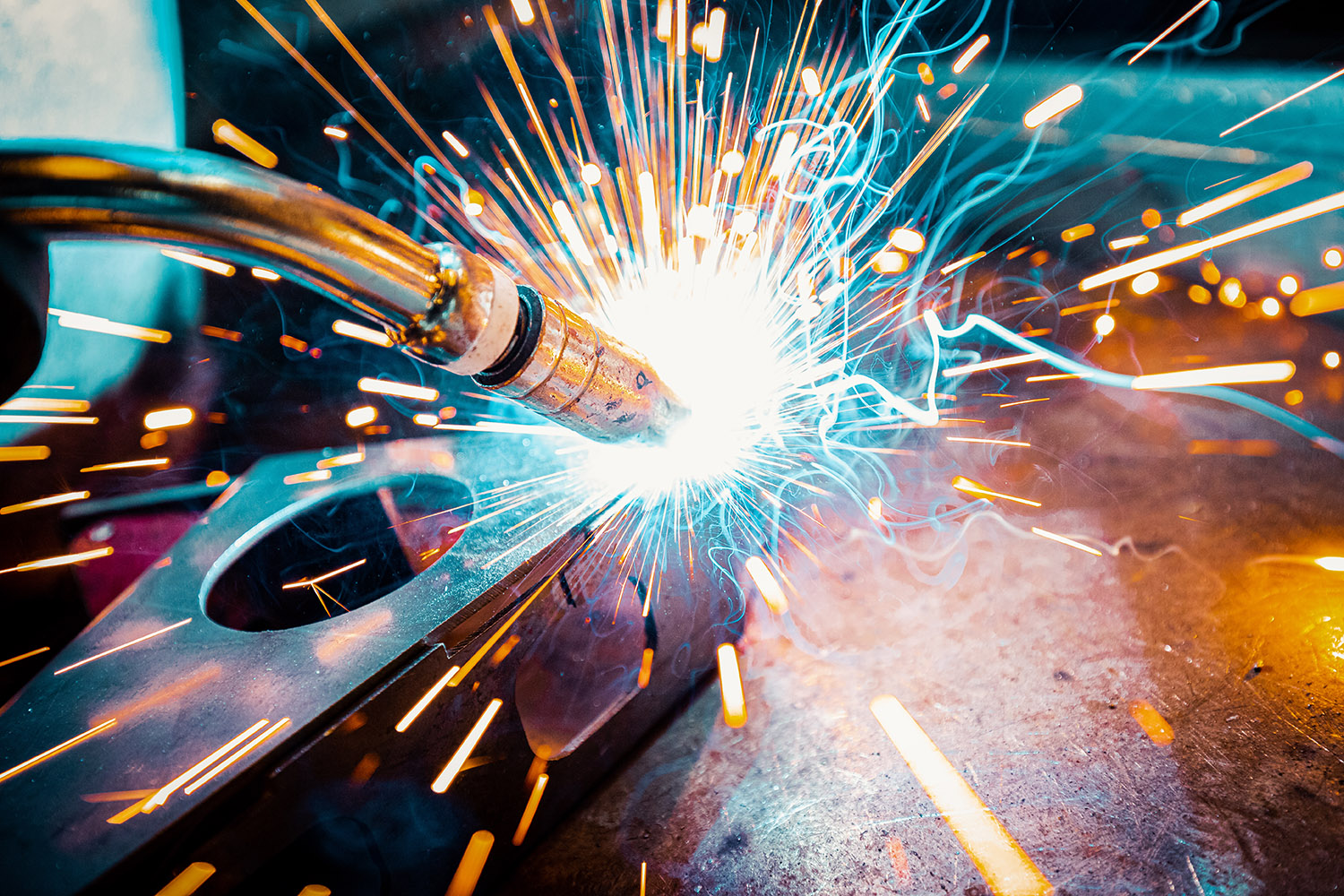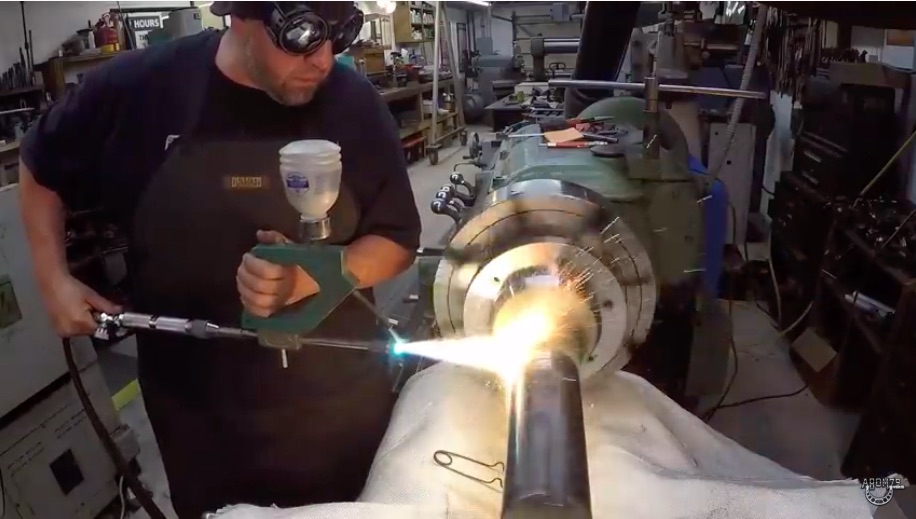Typical Welding Repair Work Issues and Just How to Address Them Successfully
Welding repair services frequently come across a variety of concerns that can endanger the stability of the last product. Typical issues consist of insufficient infiltration, porosity, and imbalance, to name a few. Each issue presents special challenges that need particular techniques for resolution. Comprehending these concerns is important for welders aiming to improve their end results and skills. This discussion will certainly discover these typical welding repair concerns and efficient methods to address them.
Inadequate Infiltration
Insufficient penetration occurs when the weld steel stops working to fully fuse with the base product, causing weak joints and prospective architectural failings. This problem usually originates from inadequate heat input, wrong electrode angle, or incorrect welding speed. Welders might come across insufficient penetration as a result of a miscalculation of the required parameters for a details product thickness or kind. In addition, contamination on the base product's surface area can hinder efficient bonding, worsening the problem. To deal with poor penetration, welders should assure suitable setups on their devices and keep a clean work surface area. Routine evaluation of welds is recommended to recognize any type of deficiencies early, enabling timely corrections and the avoidance of jeopardized architectural integrity in bonded assemblies.
Porosity
Porosity is a typical defect in welded joints that shows up as small gas bubbles entraped within the weld metal. This flaw can compromise the honesty of the weld, leading to decreased strength and potential failure under anxiety. Montana Mobile Welding and Repair Fabrication. Porosity commonly arises from contamination, wetness, or incorrect welding strategies, which allow gases to leave right into the molten weld pool. To address porosity, welders need to guarantee proper surface preparation, preserve a tidy functioning setting, and make use of suitable welding criteria. Furthermore, picking the ideal filler material and protecting gas can reduce gas entrapment. Normal inspection and testing of welds can assist determine porosity early, ensuring prompt restorative actions are taken, consequently protecting the quality and dependability of the welded structure
Misalignment
Misalignment in welding can arise from various factors, including incorrect configuration and thermal development. Recognizing the origin triggers is important for effective resolution. Several adjustment strategies are readily available to straighten elements and guarantee architectural honesty.
Sources of Imbalance
Welding imbalance commonly comes from a range of underlying issues that can endanger structural integrity. One key reason is improper fit-up of parts before welding, which can result in gaps and irregular surfaces. Variants in thermal growth during the welding procedure can also cause distortion, particularly if the materials being signed up with have various coefficients of expansion. In addition, insufficient fixturing and securing may fall short to hold elements securely in location, resulting in movement throughout welding. Improperly maintained equipment, consisting of welding machines and devices, might introduce incongruities in the weld grain, further adding to misalignment. Finally, operator mistake, originating from inadequate training or experience, can also play a considerable role in producing misaligned welds.
Improvement Strategies Available
Dealing with misalignment effectively needs a mix of rehabilitative methods customized to the details problems available. One usual approach is using components or jigs to hold elements in the right placement throughout welding, making certain regular placement. In addition, pre-heating the materials can assist decrease distortion and improve fit-up. For significant misalignment, mechanical adjustment methods, such as utilizing hydraulic jacks or clamps, can be utilized to fix the placement prior to welding. Post-weld warm therapy may also be required to eliminate stress and anxieties triggered by imbalance. Careful assessment and adjustment throughout the configuration phase can protect against imbalance issues from coming to be significant issues, promoting a smoother welding procedure and improving total architectural stability.
Distortion
Distortion is a common difficulty in welding that can develop from different variables, consisting of unequal cooling and heating. Comprehending the root causes of distortion is essential for applying efficient prevention techniques. Addressing this issue not just enhances structural stability however additionally boosts the overall top quality of the weld.
Sources of Distortion
When based on the extreme warmth of welding, materials typically go through adjustments that can bring about distortion. This phenomenon mainly develops from thermal growth and tightening throughout the welding procedure. As the weld location warms up, the product expands; upon cooling, it acquires, which can produce interior stress and anxieties. Additionally, uneven heating throughout a work surface can intensify these anxieties, causing warping or bending. The kind of material additionally plays a considerable duty; steels with varying thermal conductivity and coefficients of expansion may react differently, resulting in unforeseeable distortions. Additionally, bad joint design and insufficient fixturing can contribute to misalignment throughout welding, boosting the chance of distortion. Understanding these reasons is essential for effective welding repair and avoidance approaches.
Avoidance Techniques
Efficient prevention techniques for distortion throughout welding emphasis on controlling heat input and ensuring correct joint layout. Preserving a constant warm input assists to lessen thermal development and contraction, which can cause distortion. Utilizing strategies such as pre-heating the workpiece can additionally decrease the temperature level gradient, advertising consistent heating. Additionally, choosing appropriate joint layouts, such as T-joints or lap joints, can enhance security and minimize tension focus. Implementing proper fixturing to safeguard the workpieces in place further aids in preserving placement throughout the welding process. Staggered welding sequences can disperse warmth much more evenly, preventing localized distortion. By using these strategies, welders can substantially reduce the chance of distortion and improve the total quality of their welds.
Splitting
Fracturing is a common problem experienced in welding fixings, often arising from various factors such as improper cooling prices, product choice, or poor joint preparation. The occurrence of fractures can greatly jeopardize the honesty of the weld, leading to prospective failures throughout operation. To address this issue, welders have to first analyze the origin, guaranteeing that materials work and properly chosen for the particular application. Furthermore, managing the cooling rate during the welding process is crucial; quick air conditioning can generate stress and anxiety and lead to breaking. Proper joint design and prep work likewise add to reducing reference the risk. Executing these techniques can enhance weld high quality and longevity, inevitably lowering the possibility of breaking in ended up weldments.

Insufficient Combination
A significant concern in welding repair services is insufficient fusion, which occurs when the weld metal does not adequately bond with the base product or previous weld passes - Montana Mobile Welding and Repair. This defect can bring about weaknesses in the joint, potentially endangering the integrity of the bonded framework. Elements adding to incomplete fusion consist of inadequate warmth input, incorrect welding method, and contamination of the surface areas being signed up with. To resolve this issue successfully, welders should ensure correct pre-weld cleaning and surface prep work, along with adjust their welding specifications to attain sufficient infiltration and fusion. Routine inspection throughout the welding procedure can likewise aid recognize insufficient combination early, enabling timely restorative measures to improve the overall top quality of the weld
Overheating
While welding repairs can boost structural honesty, overheating presents a substantial difficulty that can bring about product destruction. Excessive heat during welding can modify the mechanical residential properties of steels, resulting in reduced stamina, boosted brittleness, and bending. This phenomenon is especially essential in high-stress applications where structural reliability is critical. Determining overheating can involve visual assessments for staining or distortion, as well as checking temperature during the welding process. To minimize the risks connected with getting too hot, welders ought to employ appropriate methods, such as regulating warmth input, readjusting traveling speed, and using ideal filler materials. Additionally, carrying out pre- and post-weld warm therapies can assist restore product residential properties and improve the general high quality of the repair work, guaranteeing long-lasting performance and security.
Regularly Asked Concerns
What Are the Usual Indicators of a Welding Flaw?

Just How Can I Test My Welds for Quality?
To evaluate welds for high quality, one can use aesthetic examinations, ultrasonic testing, and radiographic approaches. Each technique guarantees structural honesty, identifies issues, and validates adherence to defined criteria, inevitably enhancing the reliability of the welded joints.
What Safety Preventative Measures Should I Take While Welding?
When welding, one need to focus on safety by wearing appropriate individual safety devices, making sure correct ventilation, protecting flammable materials away, maintaining a clean other work area, and understanding environments to stop read review injuries and accidents.
Can I Repair a Weld Without Redoing the Entire Joint?
Fixing a weld without remodeling the whole joint is possible, depending on the damages (Montana Mobile Welding and Repair Belgrade Welding). Strategies such as grinding, adding filler material, or utilizing a welding process can properly attend to specific imperfections while protecting the surrounding structure
What Tools Are Crucial for Efficient Welding Repair Works?
Essential devices for effective welding repair work include a welding equipment, cable brush, grinder, protective equipment, clamps, and filler materials. Each device plays a vital function in guaranteeing top quality and security during the repair work procedure. Porosity normally develops from contamination, moisture, or inappropriate welding methods, which allow gases to leave right into the liquified weld swimming pool. Inadequately conserved equipment, including welding machines and devices, may introduce inconsistencies in the weld grain, further adding to misalignment. When subjected to the extreme warm of welding, products typically go through changes that can lead to distortion. Splitting is a typical concern come across in welding repair work, typically resulting from numerous factors such as incorrect air conditioning rates, product option, or inadequate joint prep work. A significant problem in welding repair work is incomplete combination, which happens when the weld steel does not sufficiently bond with the base material or previous weld passes.